In this figure, the axes are not displayed on the plot. How to fix it? Can anybody help me, thank you!
plot(swedishpines, axes=TRUE)
> dput(swedishpines)
structure(list(window = structure(list(type = "rectangle", xrange = c(0,
96), yrange = c(0, 100), units = structure(list(singular = "metre",
plural = "metres", multiplier = 0.1), class = "unitname")), class = "owin"),
n = 71L, x = c(1L, 1L, 2L, 2L, 7L, 9L, 11L, 13L, 14L, 16L,
17L, 17L, 20L, 21L, 23L, 24L, 25L, 26L, 27L, 28L, 28L, 33L,
33L, 36L, 37L, 39L, 39L, 39L, 41L, 45L, 48L, 49L, 52L, 52L,
53L, 53L, 56L, 58L, 59L, 60L, 61L, 61L, 61L, 63L, 65L, 66L,
66L, 69L, 72L, 72L, 73L, 74L, 74L, 75L, 76L, 79L, 81L, 82L,
83L, 84L, 85L, 86L, 87L, 92L, 92L, 93L, 94L, 94L, 95L, 95L,
95L), y = c(99L, 72L, 62L, 84L, 45L, 75L, 85L, 63L, 16L,
54L, 26L, 41L, 2L, 80L, 87L, 11L, 70L, 57L, 54L, 42L, 26L,
52L, 63L, 59L, 80L, 34L, 47L, 91L, 17L, 23L, 53L, 63L, 43L,
75L, 98L, 13L, 78L, 18L, 68L, 55L, 43L, 32L, 25L, 41L, 81L,
89L, 16L, 4L, 52L, 60L, 42L, 36L, 54L, 93L, 17L, 85L, 45L,
67L, 10L, 32L, 20L, 9L, 87L, 60L, 81L, 8L, 10L, 26L, 23L,
46L, 62L), markformat = "none"), class = "ppp")
What if in case of marked point pattern like 'longleaf'?







